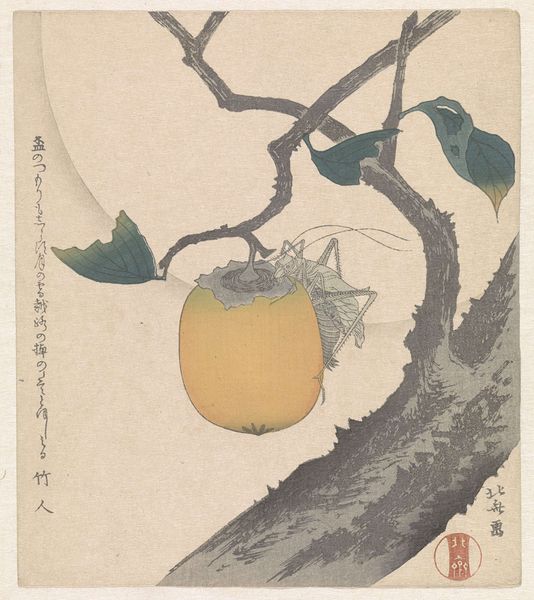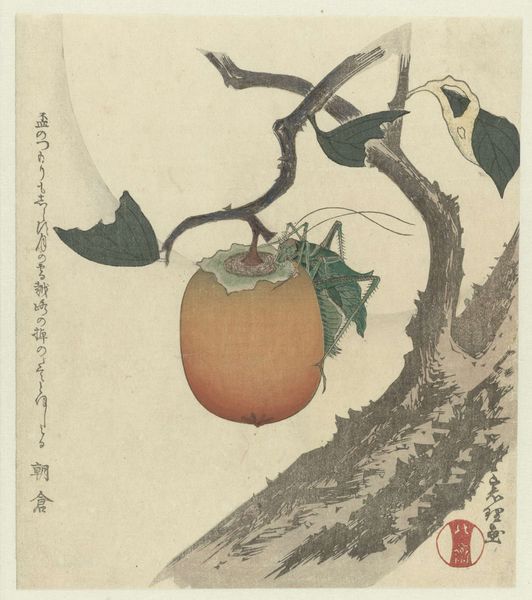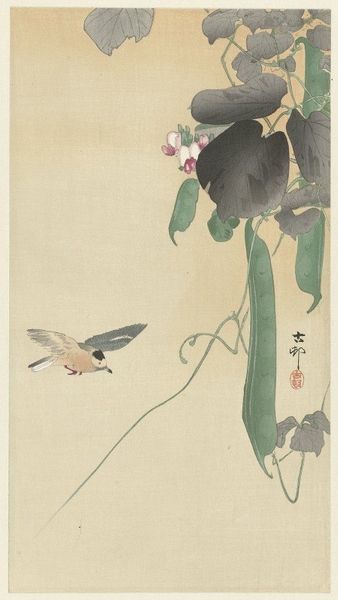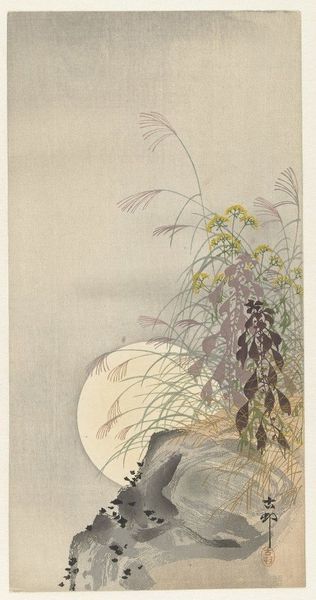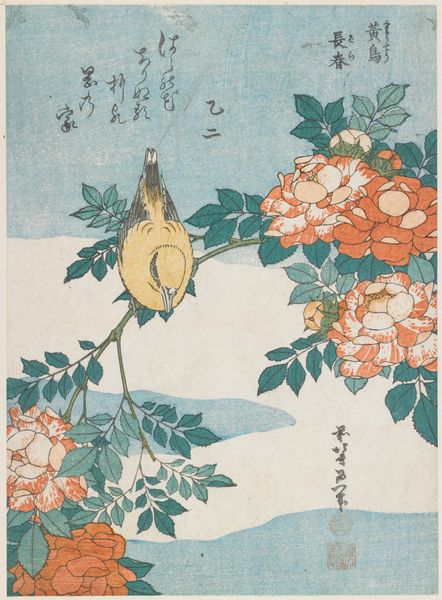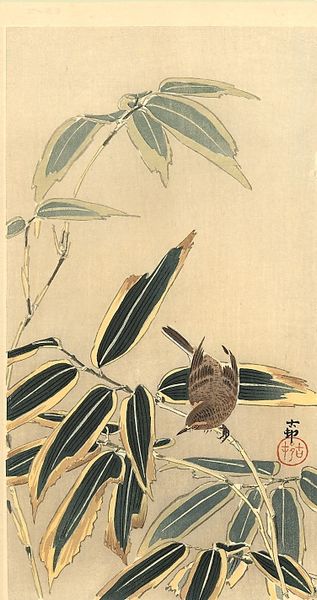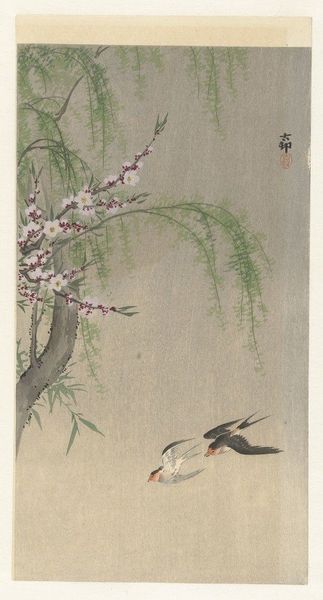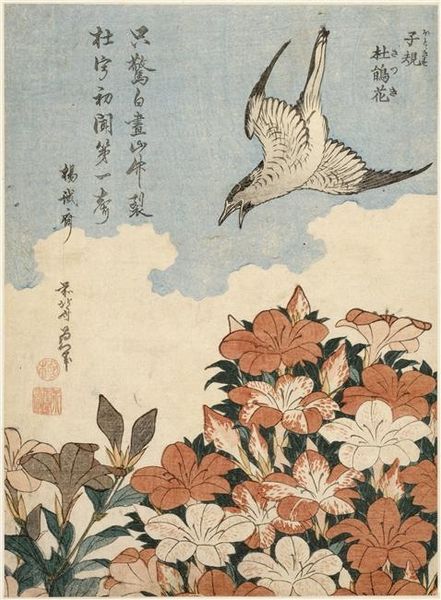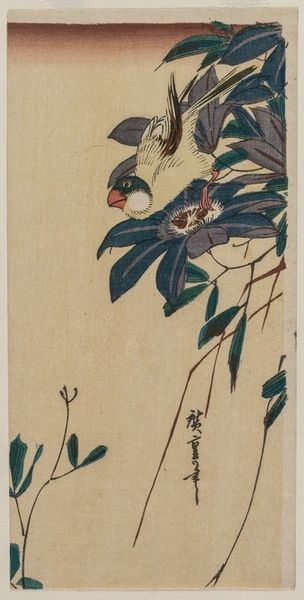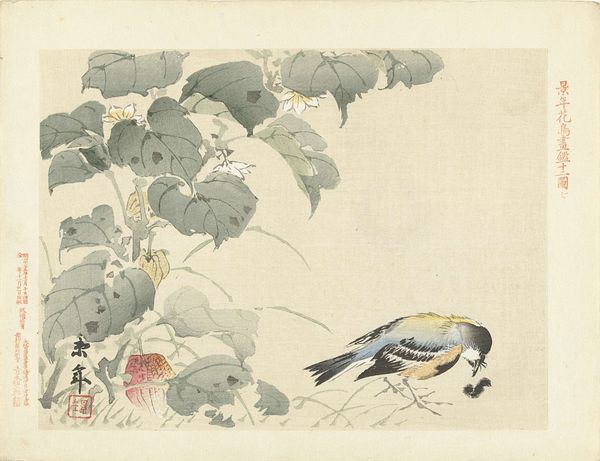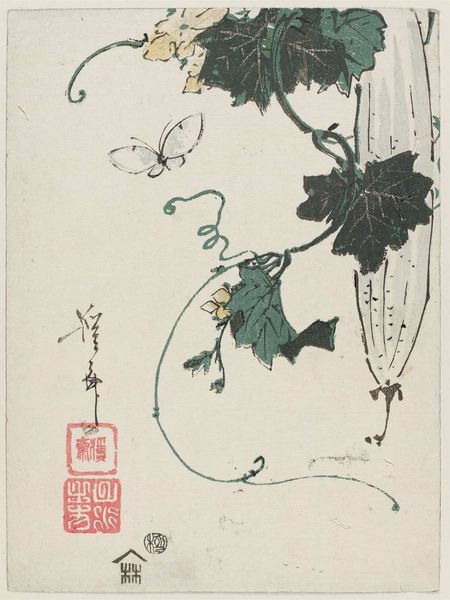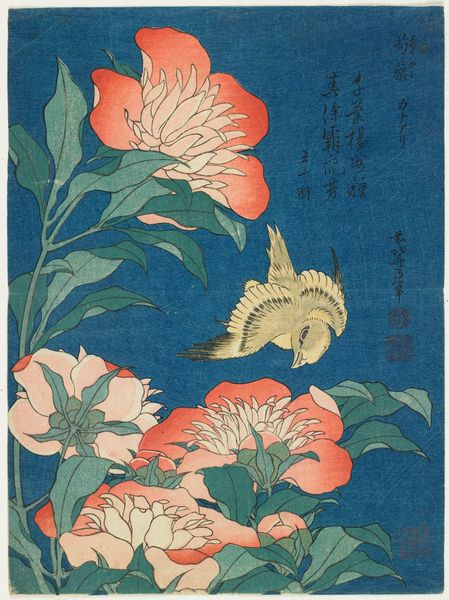
Copyright: Public Domain: Artvee
Curator: The melancholy evoked in this vertical print is striking. Look at the damp atmosphere in Ohara Koson's woodblock print, "Cuckoo in the Rain," likely created between 1900 and 1910. The subject matter and style categorize it under the Japanese Ukiyo-e tradition. Editor: Immediately, my eye is drawn to the dynamism. The bird appears captured mid-flight, juxtaposed against the stillness of the fruit and leaves. There's a palpable sense of suspended time created through compositional balance. Curator: This dynamic embodies a deeper symbolism in East Asian art where birds in flight frequently represent freedom or a transient soul—a visual expression of life’s impermanence, especially when placed against elements associated with prosperity and longevity, like fruit-bearing trees. Rain, of course, has cultural significance of cleansing but it also denotes somber contemplation and nostalgia. Editor: The print utilizes muted watercolors masterfully. The tonality reinforces the moodiness. Note the layering effects particularly in rendering the bird’s feathers and the leaves. There’s semiotic reduction happening— simplification of form toward conveying feeling. Koson distills a complex scene to its affective elements. Curator: Indeed, Koson, and the Ukiyo-e masters more broadly, understood the profound language of suggestion, relying on symbolism familiar to their audience. It moves beyond straightforward botanical art to deliver more symbolic weight within lived experience and cultural expectations. A work like this provides continuity—drawing from shared, older traditions—yet subtly innovative, creating an experience for contemporary viewers. Editor: I agree. Analyzing the piece through a formal lens gives insight into not only the surface depiction but also illuminates how each artistic choice actively constructs meaning. The artist invites viewers to contemplate more profound aspects of existence, mortality and perseverance, evoked using the interplay of figure and void, shape, tone, and hue. Curator: Seeing those cultural metaphors brought to life via the careful orchestration of these very tangible visual attributes allows one to grasp its poignant power. Editor: And recognizing those very structural decisions can help open our eyes to the world beyond.
Comments
No comments
Be the first to comment and join the conversation on the ultimate creative platform.
